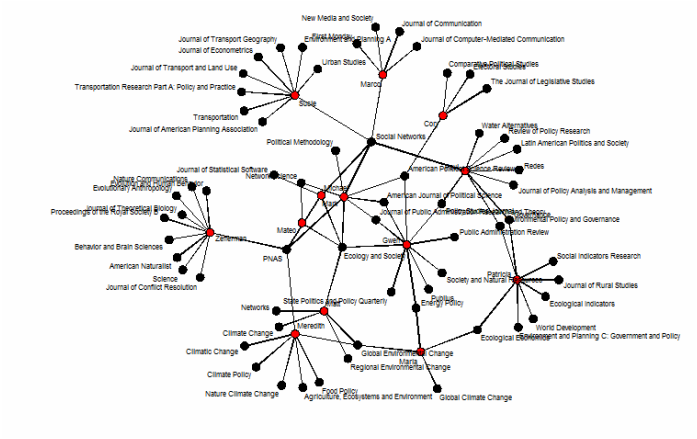Michael Levy of the Center for Environmental Policy and Behavior at UC Davis created a bipartite network of using his coworkers and their preferred journals to illustrate the functional clusters within the highly interdisciplinary lab. He then converted the visualization into a single mode network using ggnet – a ggplot implementation (via the GGally package) and calculated degree, betweenness, and eigenvector centrality for each journal for a more detailed picture of the overlapping interests within his community. He provides his r code for anyone who wants to apply try the excersize with their own lab.
Check out Michael Levy’s blog to read more and play with his code : http://environmentalpolicy.ucdavis.edu/blog/2015/03/386


 On Friday, October 21, from 2:00-3:00 p.m. University of Oxford Research Fellow, Bernie Hogan will be giving a presentation in Room 1-483 of Frances Searle Building on the Northwestern University Evanston Campus. This presentation will provide an overview of several studies that explore the phenomena related to how social networks mirror offline networks, albeit not perfectly.
On Friday, October 21, from 2:00-3:00 p.m. University of Oxford Research Fellow, Bernie Hogan will be giving a presentation in Room 1-483 of Frances Searle Building on the Northwestern University Evanston Campus. This presentation will provide an overview of several studies that explore the phenomena related to how social networks mirror offline networks, albeit not perfectly.